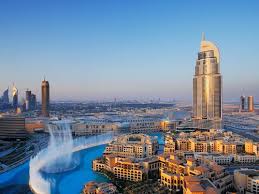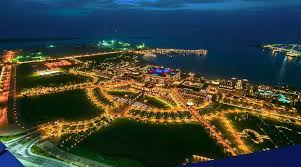Presentation of United Arab Emirates
I would also love to go ...
General data
Map of United Arab Emirates
Presentation of the country
Official name: State of the United Arab Emirates
Nature of the regime: emirate, federal state, each emirate is ruled by an emir, power is hereditary.
Head of State: Sheikh Khalifa Bin Zayed Al Nahyan, President of the Federation and Emir of Abu Dhabi (since November 2, 2004).
Geographical data
Area: 82,880 km²
Capital: Abu Dhabi (Federal Capital)
Emirates: Abu Dhabi, Dubai, Sharjah, Umm al Qaïwain, Ajman, Ras al Khaimah, Fujairah.
Main cities: Dubai (2.75 million), Sharjah (1.24 million), Abu Dhabi (1.3 million)
Official language: Arabic
Other languages: English, Hindi, Urdu, Tagalog, Persian
Currency: UAE Dirham (1 AED = 0.230 euros in December 2017)
National holiday: December 2 (creation of the Federation in 1971)

**Demographic data
Population: 9.86 million inhabitants in 2016 (12% of whom are nationals)
Density: 48 hab / km²
Population growth rate: 2.47%
Life expectancy at birth: 77 years
Literacy rate: 93%
Religions: Muslims 76% (Sunnis: 85%, Shiites: 15%, Islam: official religion), Christians (9%) Other 15%
Human Development Index: 0.840 - 46th in the world (2016)
Economic data
(sources: IMF, DGT, WB)
GDP (2016): $ 375 billion
GDP per capita (2016): 38,032 dollars per inhabitants
Growth rate (2016): 2.6%
Unemployment rate (as defined by the ILO) (2016): 14%
Inflation rate (2016): 1.6%
Main clients: Japan 14.8%, Iran 11.4%, India 9.6%, South Korea 5.7%, China 5.5%, Singapore 5.4%, Thailand 4.5%
Main suppliers: China 15.7%, India 13.4%, United States 8.9%, Germany 5.3%
Share of main sectors of activity in GDP (2016):
agriculture: 0.7%
industry: 44.6%
services: 54.7%

